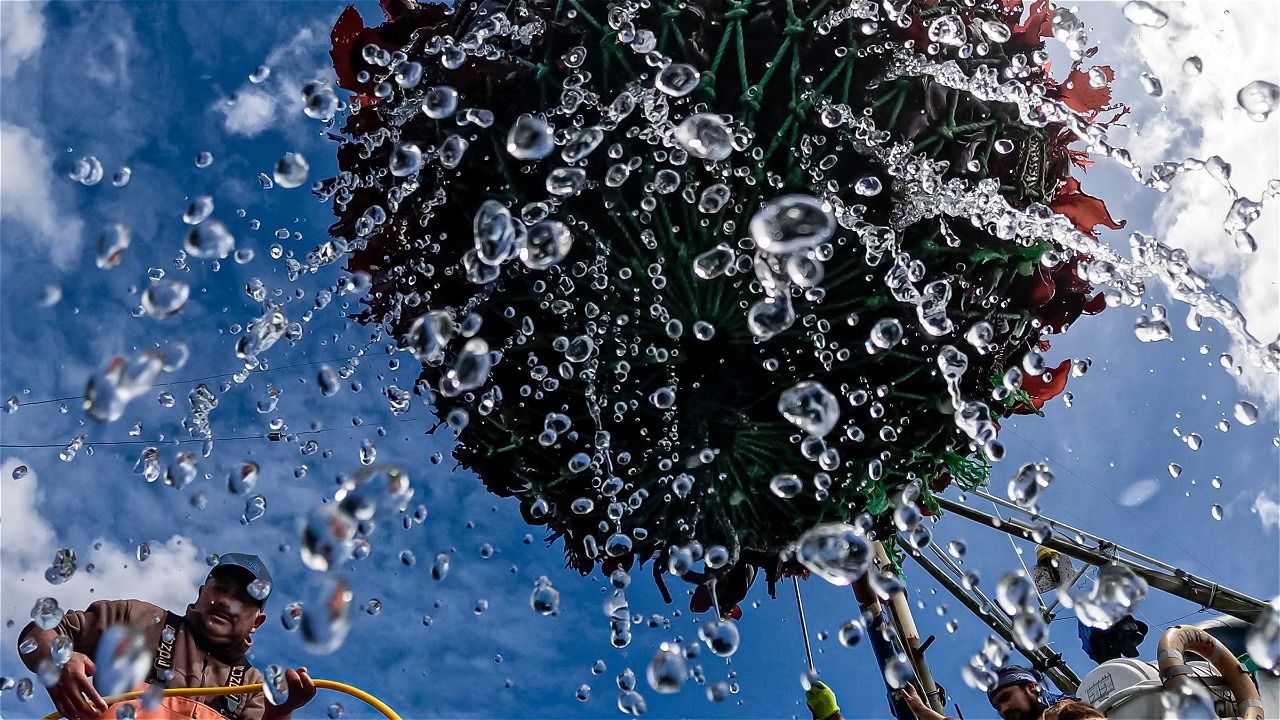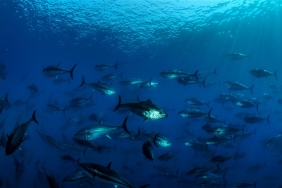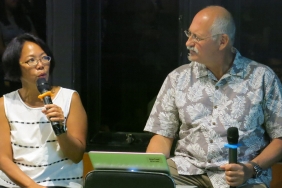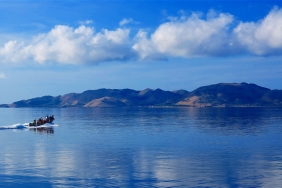INCREASING GRACILARIA SEAWEED PRODUCTION IN BONE THROUGH BMP AQUACULTURE TRAINING
Author: Ghamal Nasser Wahab (South Sulawesi Gracilaria Cultivation AIP Facilitator)
Bone Regency is the third largest producer of Gracilaria verrucosa seaweed in South Sulawesi Province. According to data from the Central Bureau of Statistics (BPS) of Bone Regency in 2015, the production of Gracilaria verrucosa seaweed in this regency showed production stability each year, namely 49,408 tons (2012), 62,899 tons (2013), and 75,724 tons (2015). This is supported by the high potential of brackish water pond cultivation area in Bone Regency, which reaches up to 15,244 ha, as well as the growing market demand for seaweed.
In 2016, the Bone Regency Marine and Fisheries Service (DKP) targeted seaweed production to increase to 85,543 tons. However, the likelihood of achieving this target is quite low, because the weather conditions in early to mid-2016 tend to be rainy, causing a decrease in production in potential seaweed production areas, namely Kecamatan Cenrana, which is also a riverine area. In addition, the possibility of not achieving the target is also influenced by seaweed prices, which are considered low until mid-year.
Seaweed cultivation can improve the economy of communities around the coast and river estuaries. However, the massive cultivation activities can also have a negative impact on the environment, such as activities that use pesticides / hazardous chemicals, excessive application of fertilizers, and cutting mangroves to open pond land.
In addition, Gracilaria verrucosa seaweed cultivation efforts are also faced with various problems. Starting from pest attacks, low seed quality, minimal production, business legality, to the absence of cultivator groups.
This is the background for WWF-Indonesia to assist the improvement of Gracilaria seaweed aquaculture based on best practices (BMP) in Latonro Village, Cenrana District, Bone Regency, in early August 2016. This mentoring program was conducted together with PT Celebes Seaweed Group (CSG), a Seafood Savers member company based in South Sulawesi and engaged in the export of Gracilaria seaweed. The activity was attended by 34 participants, including farmers, Bone District Extension Agency, and Bone District DKP.
This BMP training is the first step of the mentoring effort, which aims to increase the production target of Gracilaria seaweed cultivation that is managed sustainably. WWF-Indonesia states that poor seaweed quality and environmental problems often faced by farmers can be overcome by implementing BMPs from the beginning of the cultivation process.
BMPs are practical guidelines that can produce quality products and preserve the environment. The preparation of BMPs has been adjusted to national standards such as the Good Fish Cultivation Practices (CBIB) and Indonesian National Standards (SNI).
Sutamin, S.Pi, M.Si, CBIB Assessor in Bone Regency, also explained that the principles of good aquaculture must fulfill three elements, namely bio security, food safety, and sustainability. The fulfillment of these three elements guarantees that the products that will be produced are safe and come from sustainable processes. However, to fulfill these three elements, farmers certainly need technical assistance in the field.
The Gracilaria BMP training also presented material by business actors, namely Asdar Marzuki from PT Celebes Seaweed Group. Asdar said, "Improving product quality is necessary to move further in the Gracilaria industry. This quality includes yield, viscosity and gel strength which can be obtained through proper cultivation management and innovation."
In addition to the presentation of material by the resource persons, the training was also complemented by a field visit to observe the Gracilaria seaweed cultivation process directly. The farmers had the opportunity to practice water quality measurement methods (DO, pH and salinity) using a DO meter, pH meter, and refractometer. Furthermore, the farmers received an explanation of the pond's water quality conditions and possible interventions to address them.
This training received a positive response from the participants, especially the farmers, who actively asked questions about the cultivation problems they faced and enthusiastically tried the use of water quality measuring devices. In fact, some farmers asked for a regular meeting between farmers, government, business actors, and WWF-Indonesia.
DKP Bone Regency also welcomed the training. In his speech, Muh. Amin, Head of Cultivation Division of DKP Bone, said, "The Bone government fully appreciates WWF-Indonesia's efforts in implementing this activity. Hopefully, all parties can work together to oversee the pro-environment Gracilaria cultivation business."





